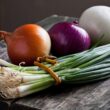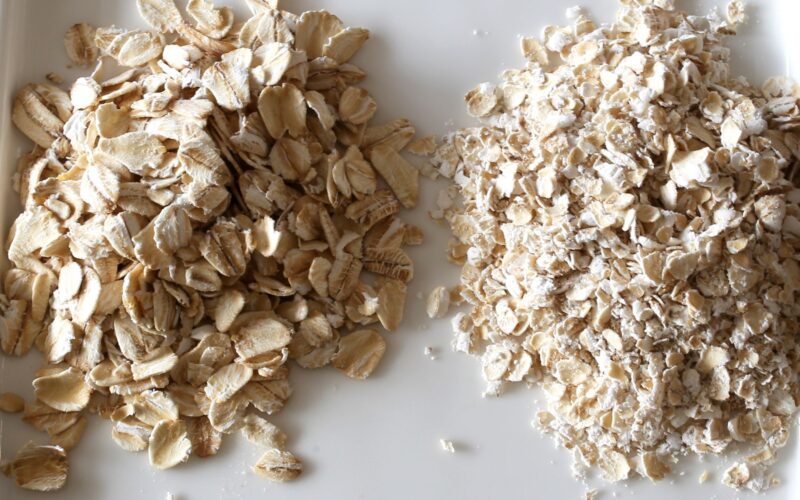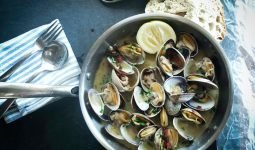Ever wondered about those breakfast aisle labels? The terms “oats” and “oatmeal” often get used interchangeably, causing confusion for shoppers and home cooks alike. Let’s clear this up!
Technically, oats refers to the whole grains themselves, while oatmeal typically describes the porridge-like dish made from those grains or their processed form.
This distinction matters when you’re shopping or following recipes, as each type has different cooking times and textures.
The confusion makes sense because they’re closely related. Oats start as harvested grains called groats that are then processed into various forms like steel-cut, rolled, or instant.
When cooked with liquid, these processed oats become what many call oatmeal – that warm, comforting breakfast that’s been a nutritional powerhouse for generations.
What Are Oats?
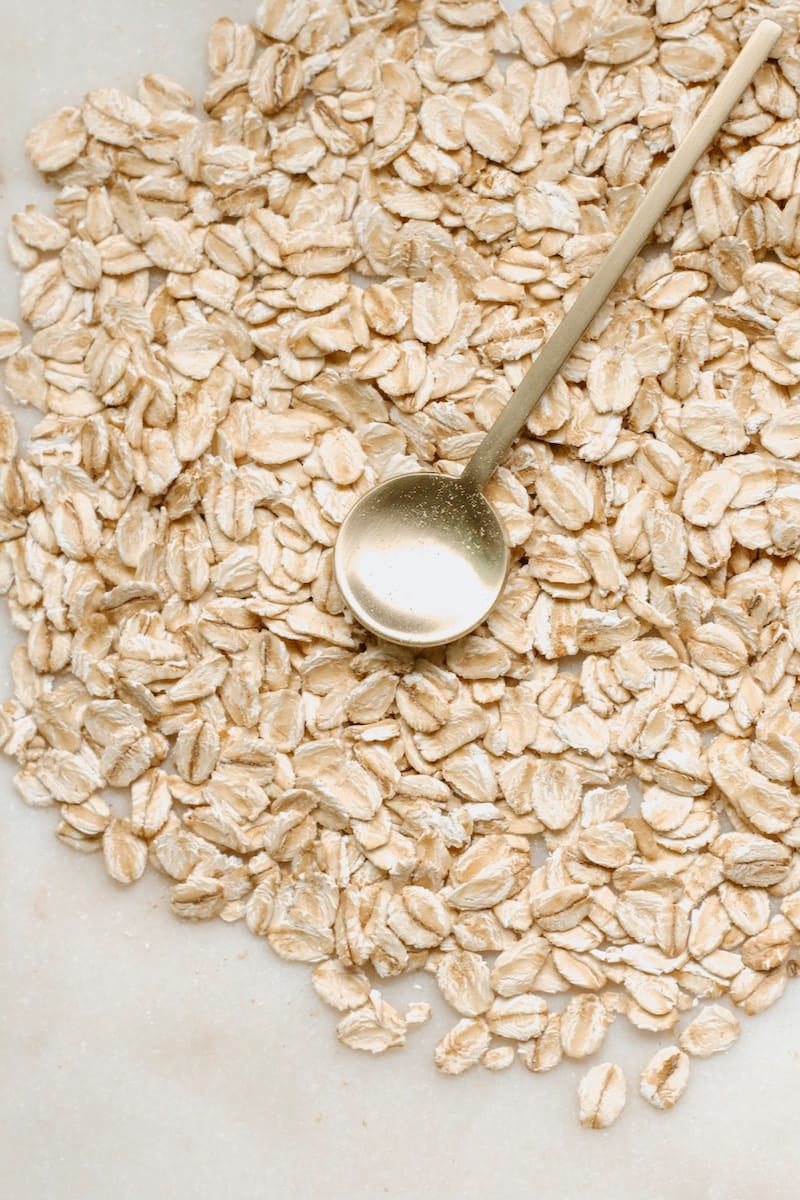
Oats are whole grains that come from the Avena sativa plant. They are harvested from the field as oat groats, which are the complete grain kernels with the inedible hulls removed.
These nutritious grains have been a staple food for centuries in many cultures.
They’re particularly popular in countries with cooler climates like Scotland, Ireland, and Nordic countries.
In their natural state, oat groats are quite hard and take a long time to cook.
This is why most oats undergo some processing before reaching store shelves.
Technically, “oats” refers to the whole grains themselves, while “oatmeal” often refers to the porridge-like dish made from them.
Common types of processed oats include:
- Steel-cut oats: Oat groats cut into 2-3 pieces
- Rolled oats: Steamed and flattened oat groats
- Quick oats: Thinly rolled and cut into smaller pieces
- Instant oats: Pre-cooked, dried, and rolled very thin
Oats in their raw form are considered a single-ingredient whole food.
They contain beneficial nutrients, including fiber, protein, vitamins, and minerals.
Unlike oatmeal (the prepared dish), raw oats don’t contain added water content. They need to be cooked or soaked before eating.
What Is Oatmeal?
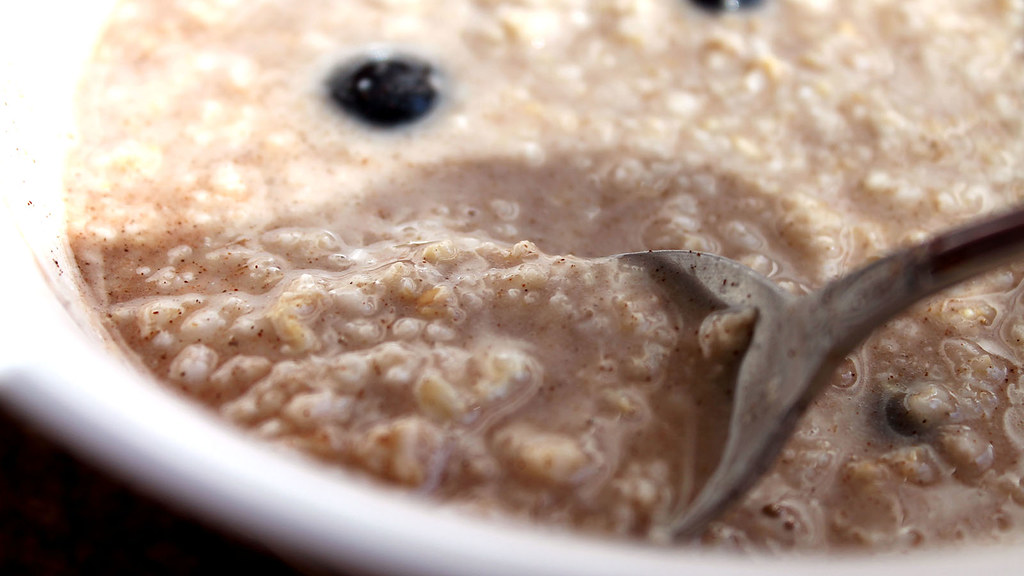
Oatmeal is a popular breakfast dish made by cooking oats with water or milk.
Technically, oatmeal refers to the porridge-like dish made from oats, while oats refers to the whole grains themselves.
Many people use the terms interchangeably, which can cause confusion.
Oatmeal is essentially the cooked version of oats, which adds water content to the grain.
The process of making oatmeal is simple. It involves heating oats with liquid until they soften and absorb the moisture, creating a warm, comforting dish.
Types of Oatmeal Based on Oat Type:
- Steel-cut oatmeal (from chopped oat groats)
- Rolled oats oatmeal (from flattened oat groats)
- Quick oats oatmeal (from thinly rolled oats)
- Instant oatmeal (pre-cooked and dried)
Cooking times vary depending on the type of oats used. Rolled oats typically cook in about 5 minutes, making them a convenient choice for busy mornings.
Oatmeal can be prepared with various liquids, including water, milk, plant-based milks, or a combination.
The liquid-to-oats ratio affects the final consistency – thicker or thinner according to preference.
Oatmeal is considered the processed version of raw oats, making it easier to prepare and digest.
This processing makes oatmeal more accessible for daily consumption.
Key Differences Between Oats And Oatmeal
Oats and oatmeal are terms often used interchangeably, but they’re actually different.
Oats refer to the whole grain kernels that are harvested from the oat plant, while oatmeal is the dish made by cooking these oats with liquid.
The main distinction is that oats are the raw ingredient, while oatmeal is the cooked dish.
When oats are cooked to make oatmeal, they absorb water, changing their texture and volume.
Processing Levels:
- Oats: Uncooked whole grains
- Oatmeal: Cooked dish made from oats and liquid
Both terms can be confusing because “oatmeal” sometimes refers to certain types of processed oats, like rolled oats or quick oats, even before cooking.
Types of Oats Used for Oatmeal:
- Steel-cut oats (least processed)
- Rolled/old-fashioned oats (partially processed)
- Quick oats (more processed)
- Instant oats (most processed)
All forms of oats are 100% whole grain and offer similar nutritional benefits. The difference lies mainly in their processing method and cooking time.
The manufacturing process is what separates various types of oats.
Both rolled oats and steel-cut oats begin as whole oats (groats), but undergo different processing methods.
Despite these differences, all varieties can be part of a nutritious diet.
The choice between them often comes down to texture preference and cooking time requirements.
Conclusion
Oats and oatmeal are related but different in key ways. Oats refer to the whole grains, while oatmeal typically describes the porridge-like dish made from processed oats.
The main difference lies in processing. Oat groats are tougher and less processed, while oatmeal products have undergone more processing to make them easier to cook.
Both options offer significant health benefits thanks to their beta-glucan fiber content.
This special fiber helps lower cholesterol and improve heart health.
When shopping, remember these key differences:
- Steel-cut oats: Least processed, chewiest texture, longest cooking time
- Rolled/old-fashioned oats: Medium processing, faster cooking
- Quick oats: Most processed, fastest cooking time
Your choice between oats and oatmeal should depend on your texture preference, available preparation time, and desired cooking method.
Both provide excellent nutrition when prepared without excessive added sugars or fats.
